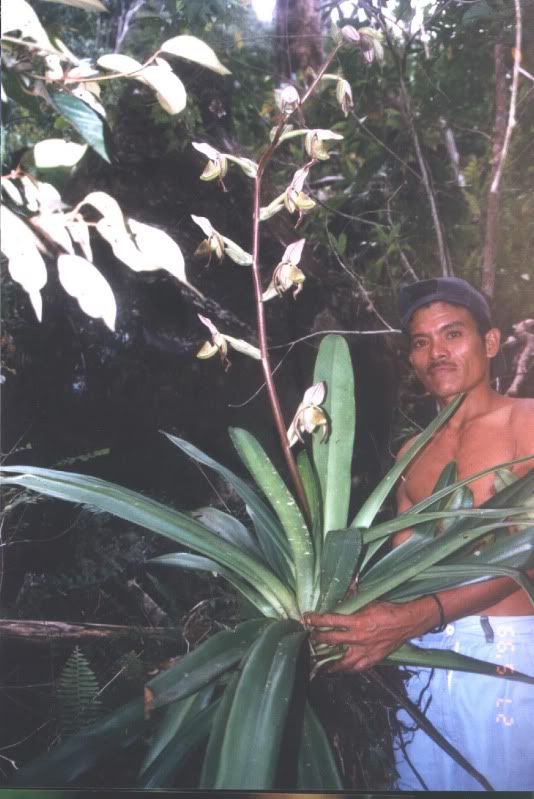SlipperFan
Addicted
I can't stand it!!! So jealous!













Just like that, Golamco never went to the habitat, ever. He bought the plants from someone from U. family. The real collector is here, with a clump of randsii gigantea, growing amongst a colony of anitum
majority are hoverflies of the family Syrphidiae. family is extremely widely distributed with probly like 5-6000 species. many have evolved with muellerian mimicry, having gold and black barring on their abdomens so as to appear as a wasp or bee of some sort. many are initially attracted by colors and are then brought in for a closer look but warts on petals, colorbreaks, warts on back of pouch below staminode (venustum) warts on staminode or other staminodinal variations (roth) all act as brood site mimics. meaning they are dressed up to look like an ideal place for their pollinator to want to come investigate as a place to lay their eggs, so their eggs will have plenty of food as they grow up (hoverflies eat aphids/aphid larvae)... of course hoverflies and paphiopedilum are not an exclusive relationship, as fragrances and different floral morphological designs and stuff are highly variable within a widespread genus of ~90 species but they are certainly a well established mutualism.I wonder if the pollinating species is the same, or is there a universal visual clue to a wide range of related pollinators after which the mechanics of the flower sort out the specific pollinator.
exceptional. both yang's plants as well roth's.
majority are hoverflies of the family Syrphidiae. family is extremely widely distributed with probly like 5-6000 species. many have evolved with muellerian mimicry, having gold and black barring on their abdomens so as to appear as a wasp or bee of some sort. many are initially attracted by colors and are then brought in for a closer look but warts on petals, colorbreaks, warts on back of pouch below staminode (venustum) warts on staminode or other staminodinal variations (roth) all act as brood site mimics. meaning they are dressed up to look like an ideal place for their pollinator to want to come investigate as a place to lay their eggs, so their eggs will have plenty of food as they grow up (hoverflies eat aphids/aphid larvae)... of course hoverflies and paphiopedilum are not an exclusive relationship, as fragrances and different floral morphological designs and stuff are highly variable within a widespread genus of ~90 species but they are certainly a well established mutualism.